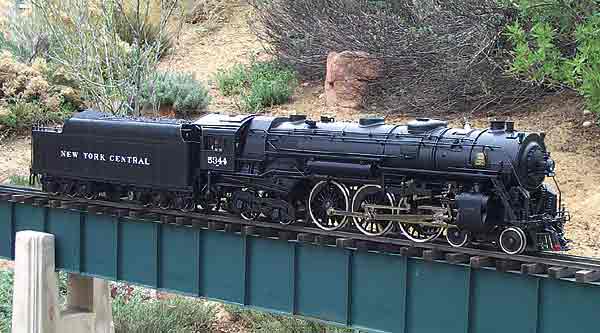
Marc Horovitz 1:29 scale, gauge-1 NYC Hudson USA Trains PO Box 100 Malden MA 02148 Price: $2,299.95 w/o sound; $2,699.95 with Phoenix sound system installed Web site: www.usatrains.com All-metal model of New York Central’s J1e Hudson; die-cast boiler, cab, tender shell, and detail parts; smoke unit synchronized to axle rotation (four puffs per revolution); working […]
Read More…
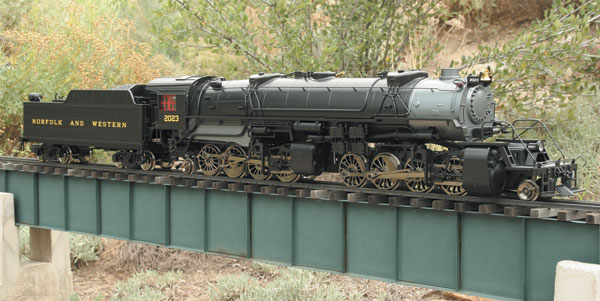
Marc Horovitz 1:29 scale, gauge 1 2-8-8-2 locomotiveAristo-Craft Trains698 South 21st St.Irvington NJ 07111Price: $945 ($993 for Union Pacific)Web site: www.aristocraft.com Plastic-and-metal model of a USRA 2-8-8-2 Mallet locomotive; USRA or Vanderbilt tender, depending upon road name; smoke unit; sound ready; DCC ready; battery ready; control switches under firebox; two motors with flywheels and fans; […]
Read More…
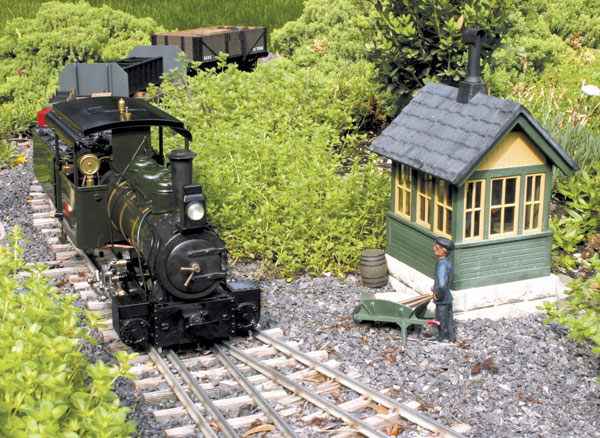
A Roundhouse “Fowler,” fitted with a coal-fired boiler by John Shawe, at work on the author’s garden railway near Toronto. Jeff Young photo When we acquire a small-scale live steamer, it is usually to run on an established garden railway. The selection of your live-steam locomotive was probably influenced by the physical characteristics of the […]
Read More…

The No. 24 was the last locomotive supplied to the two-foot gauge Sandy River & Rangeley Lakes Railroad in Maine. This G scale live steam model was manufactured by Roundhouse Engineering of Doncaster, England. Kenneth Matticks Gas is added through the filler valve in the center of the tank. By watching the pressure gauge and […]
Read More…
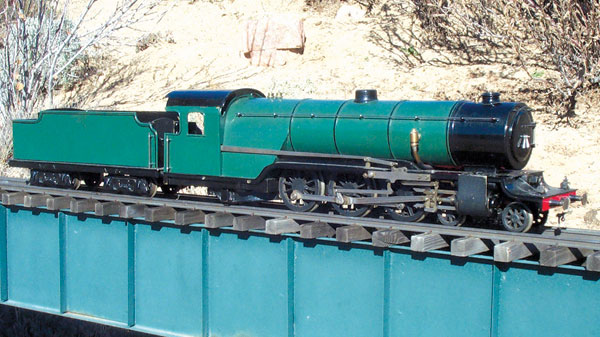
Lillian “Curly” Lawrence and the history of live-steam locomotives Lillian “Curly” Lawrence was a British model engineer who lived from 1882 to 1967. He built his first live-steam locomotive at the age of 13 on a used treadle lathe. A curious and reclusive fellow, he wrote live-steam columns for British model-engineering magazines under the pen […]
Read More…
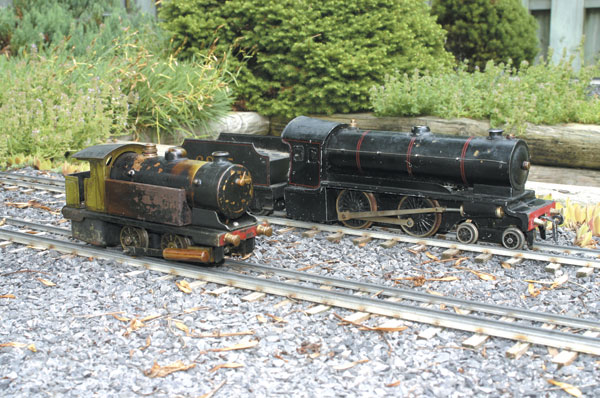
A pair of well used, tinplate live steamers. The engine in the foreground is by Bowman; the one behind is Bassett-Lowke. Despite their tatty appearance, they are both in good operating condition and see regular use in the garden. Jeff Young An important part of the history of small-scale live steam is the tinplate locomotives […]
Read More…

The No. 24 was the last locomotive supplied to the two-foot gauge Sandy River & Rangeley Lakes Railroad in Maine. This G scale live steam model was manufactured by Roundhouse Engineering of Doncaster, England. Kenneth Matticks Gas is added through the filler valve in the center of the tank. By watching the pressure gauge and […]
Read More…

A Roundhouse “Fowler,” fitted with a coal-fired boiler by John Shawe, at work on the author’s garden railway near Toronto. Jeff Young When we acquire a small-scale live steamer, it is usually to run on an established garden railway. The selection of your live-steam locomotive was probably influenced by the physical characteristics of the existing […]
Read More…
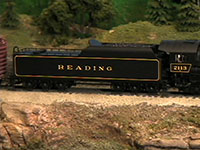
Precision HO scale Reading T1-class 4-8-4 Executive editor Andy Sperandeo reviewed the HO scale “T Hog” in the April issue’s Product Review Extravaganza. Click the icons below to see a video clip of this well-detailed, well-proportioned model steam engine. All videos may take several minutes or more to download depending on your connection speed. […]
Read More…

Precision HO scale Reading T1-class 4-8-4 Executive editor Andy Sperandeo reviewed the HO scale “T Hog” in the April issue’s Product Review Extravaganza. Click the icons below to see a video clip of this well-detailed, well-proportioned model steam engine. All videos may take several minutes or more to download depending on your connection speed. […]
Read More…
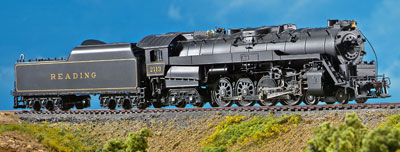
Precision Craft HO Reading T1-class 4-8-4 This HO scale “T Hog” will bring back memories of the Reading Rambles steam excursions of the late 1950s and early 1960s for an older generation of steam fans and of Chessie Steam Specials for more recent aficionados. This well-detailed, well-proportioned engine includes a dual-mode sound system that works […]
Read More…
Q Why do automobile rack cars have TTX Co. reporting marks but also bear a logo from a railroad? – Gary Gergye, Marietta, Ga. A This started in the early 1960s when autoracks first came into use. Flatcars, with TTX reporting marks, were pulled from the Trailer Train pool, but the racks were purchased by […]
Read More…








